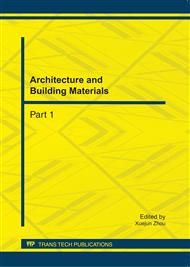p.773
p.777
p.782
p.786
p.790
p.796
p.800
p.804
p.810
Numerical Study on Tunnel Mechanics in Jointed Rock Mass with Finite Element Method
Abstract:
Tunnel mechanics mainly depend on joints properties in layered and jointed rock mass, and most of the present methods adopted in numerical analysis are distinct element method. Combining to the Gaixiaba tunnel, considering the jointed properties such as dip angles, distances and lateral pressure coefficient, the finite element models are made in this paper. Results show that the plastic zone and total displacement presented a symmetric distribution with the axial of joints dip, and the plastic zone is very similar to the results suggested by Goodman. The dip angles, distances of joints and lateral pressure coefficient have significant effect on the tunnel mechanics.
Info:
Periodical:
Pages:
790-795
Citation:
Online since:
September 2011
Authors:
Price:
Сopyright:
© 2011 Trans Tech Publications Ltd. All Rights Reserved
Share:
Citation:


